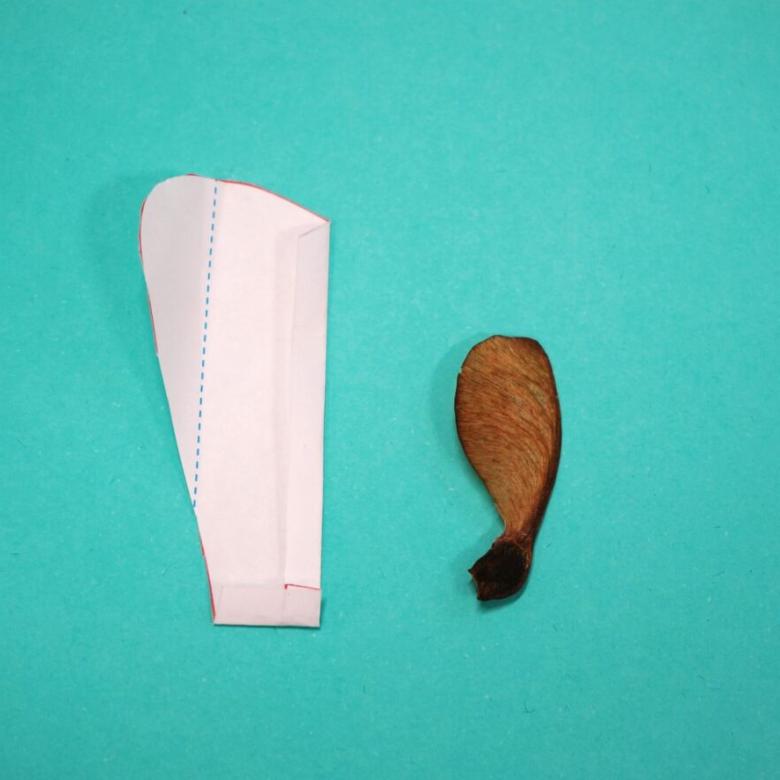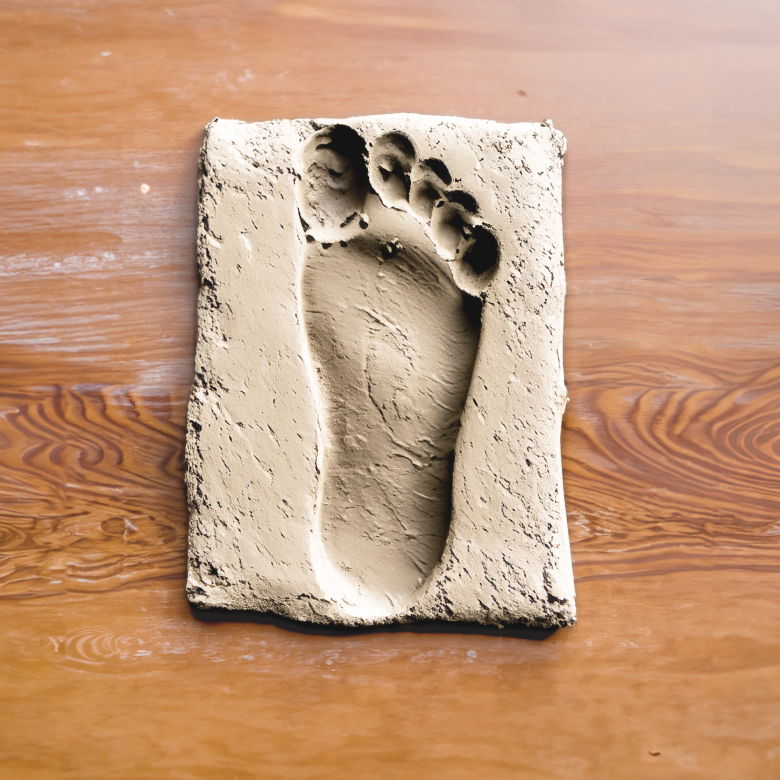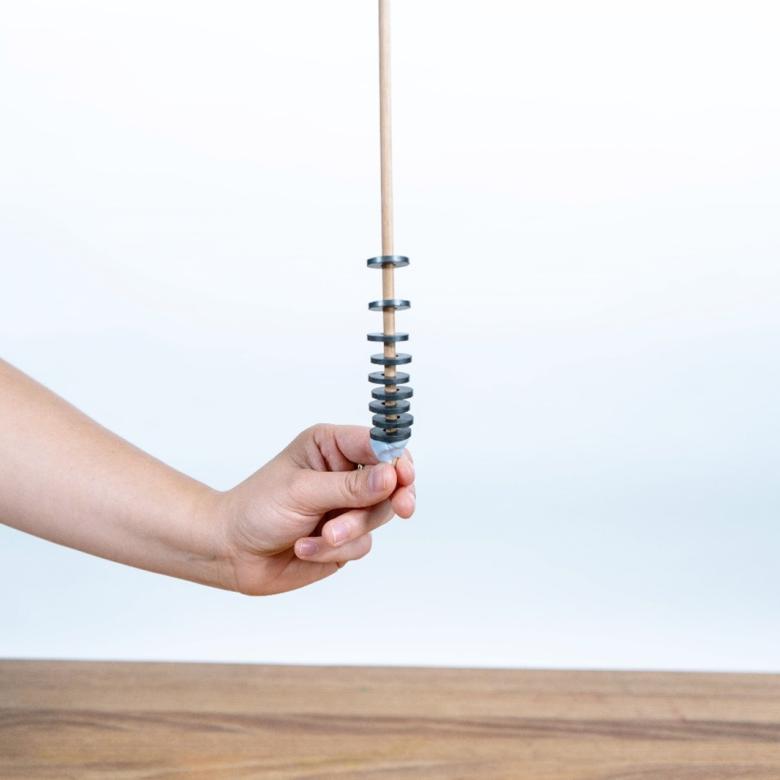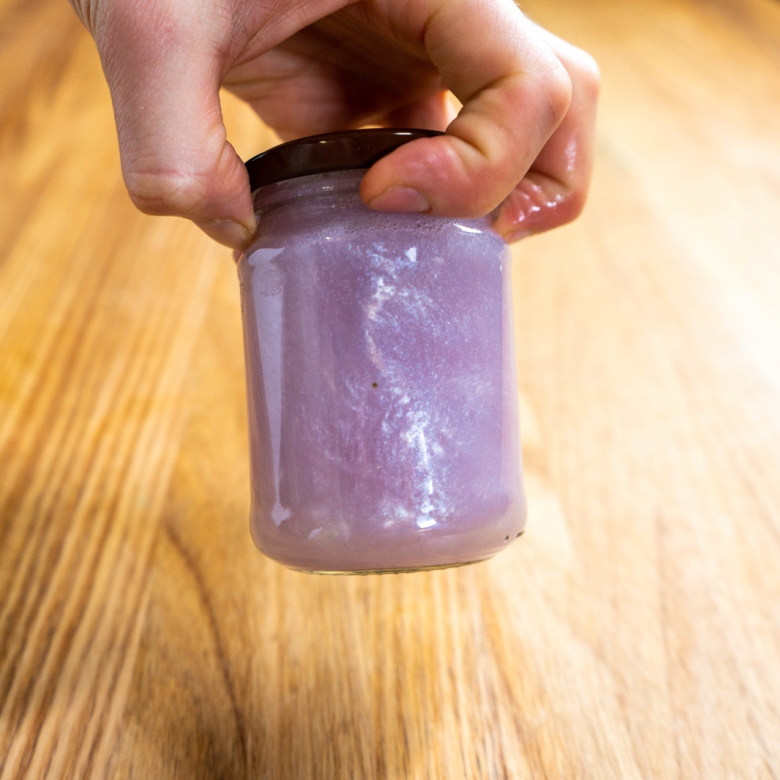You’ll need
- Scissors
- A plastic drinking straw
- A large, wide rubber band (about 6 mm wide and 9 cm long when not stretched)
- 2 ice cream sticks (from a craft shop, or clean the stick after eating an ice cream)
- 2 small, thin rubber bands (about 6.5 cm long when not stretched)
What to do
- Gather your materials on a flat surface.
- Use the scissors to cut 2 pieces from the straw, each about 3 cm long.
- Wrap the large rubber band lengthways around one of the ice cream sticks so that the rubber band is laying against the flat sides of the ice cream stick.
- Place one of the straw pieces underneath the large rubber band, close to one end of the ice cream stick. The straw should be at right angles to the ice cream stick.
- Lay the second ice cream stick on top of the first one so the straw is in between them.
- Using one of the small, thin rubber bands, tie the 2 ice cream sticks together at the end that has the piece of straw. Wrap the rubber band around the sticks until it is tight.
- At the opposite end to the first piece of straw, place the second piece of straw underneath the second ice cream stick but on top of the large rubber band. Make sure the pieces of straw are about the same distance from each end.
- Use the other small rubber band to tie the 2 ice cream sticks together at this end, like you did for the other end.
- Now you’re ready to play your weird whirring widget! Hold your widget with one end in each hand. Place your lips on the ice cream sticks and blow between them.
Questions to ask
How do you think the sound is being made?
What happens to the sound if you blow harder or softer?
What happens to the sound if you move the pieces of straw closer together?
Can you play a simple tune like Mary had a little lamb? All you need is 4 widgets and 3 friends! Just make sure each widget is playing a different note by moving the pieces of straw. With a bit of practice, you’ll be holding a concert in no time!
What's happening
All sounds are made by vibrations. A vibration is when something moves backwards and forwards. When you blow into the widget, the air makes the large rubber band vibrate, and that vibration makes a sound. Fast vibrations cause high-pitched sounds and slower vibrations cause lower-pitched sounds. If the back-and-forth movements are small, the sound will be quiet. If they are larger, it will be louder. Blowing harder into the widget makes the rubber band vibrate faster, so the pitch of the sound should become higher. It also makes it move more, so the sound should be louder.
Long or large objects vibrate more slowly and make lower-pitched sounds, while shorter or smaller objects vibrate quickly and make higher-pitched sounds. When you move the straws closer together, you shorten the part of the rubber band that is vibrating, so the pitch becomes higher.
(Sound of bubbles popping)
Anna: Hi, my name is Anna and I’m from the Questacon Science Squad and today I’m going to show you to make your own Weird Whirring Widget and some very funny sounds.
You need:
- a pair of scissors
- a plastic straw
- two pop sticks
- a large, thick rubber band, like this one
Anna holds up the large, thick rubber band)
- and two smaller rubber bands
Now firstly, take one of your pop sticks and wrap the large, thick rubber band around the end of it like this.
(Anna starts wrapping the large, thick rubber band around the pop stick)
Oops.
(Rubber band flicks off)
Nearly there, excellent.
Now take your pair of scissors and your plastic straw and cut two strips about three centimetres long.
(Anna cuts two strips)
Excellent.
Now take your pop stick and your piece of straw and place it underneath the rubber band at one end, just like that.
(Anna places the straw onto the pop stick)
Then place the other pop stick on top. Now tie the two ends tightly together with your thin, rubber band.
(Anna is tightening the thin rubber band around the pop stick and straw)
Nice and tight, one more, excellent.
Now take your other piece of straw and place it between the two pop sticks, about the same distance from the end as the other one. And tie it together tightly with the other thin, rubber band.
(Anna is tightening the rubber band over the second piece of straw and pop stick)
Excellent, one more, there we go.
Now you’re ready to play your Weird Whirring Widget. Bring it to your mouth and blow gently.
(Anna blows the Weird Whirring Widget gently and it plays quietly)
Or blow with force to make some very funny sounds.
(Anna blows the Weird Whirring Widget with force and it plays loudly)
Bring the straws closer together or further apart to make some high sounds or low sounds.
To find out why your Weird Whirring Widget makes these funny sounds visit the Questacon Science Squad website.
Did you know
Sound moves as waves. The more squished together the waves are, the higher pitched the sound. This is called the frequency of sound, where waves that are squished together have a high frequency and waves that are stretched out have a low frequency.
The frequency of sound is measured in hertz (known by the symbol Hz), which is how many waves are produced each second. Humans can only hear sounds with frequencies between 20 Hz and 20,000 Hz. As a person grows older, the range of sounds they can hear becomes smaller, and they may not be able to hear very high-pitched or very low-pitched sounds. Some animals can hear sounds that humans can’t. For example, dogs and bats can hear very high-pitched sounds, while whales can hear very low-pitched sounds.






